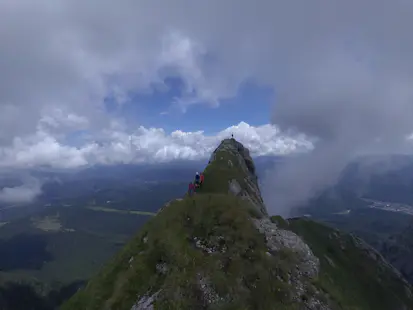Rock Climbing in the Bucegi Mountains: Top Outdoor Adventures Awaiting You
4.90
(18 reviews)
Discover the stunning beauty and unique geological formations of Romania’s central Bucegi Mountains!
Situated just south of the former industrial hub of Brașov, the Bucegi Mountains boast plenty of excellent rock climbing opportunities From the Coştila Valley to the Sinaia Massif, there are hundreds of great routes to choose from! Compare and book a certified guide for your trip on Explore-Share.com: 1500+ guides, 70+ countries and more than 8000 different programs to choose from. Take a pick from our selection of Rock Climbing trips to the Bucegi Mountains. The mountains are calling!
Top rock climbing trips | Romania
FAQs: Rock Climbing in Romania
What should I know about Rock Climbing Bucegi Mountains?
Sitting in central Romania, at the very heart of the country, the Bucegi Mountains make up part of the Southern Carpathian Mountains. The mountain range features deeply glaciated valleys and pristine limestone climbing surfaces.
The Bucegis have numerous cliff walls ranging from 900 to 1,500 vertical meters (3,000 to 5,000 feet) in height and attract climbers from throughout the country and region.
While summer is the most popular time to visit the mountain range, many climbers opt to head to the Bucegis in the winter as well. The area is frequently used by climbers preparing to ascend some of the continent’s highest peaks the following summer.
Omu, the highest mountain in the range, is frequented by beginner climbers, since it is not overly technical and mostly requires scrambling. More advanced rock climbers may opt to head to Caraiman (2,384 meters/7,821 feet), the Morar Needles or the Ţigăneşti Towers to test out their climbing skills.
Why should I choose Bucegi Mountains for my Rock Climbing adventure?
Stunning scenery
Composed of verdant mountain meadows and forests as well as rocky granite outcroppings, the Bucegi Mountains serve as the perfectly scenic backdrop for any rock climbing adventure. Head to Bucegi Natural Park or the Prahova Valley for incredible scenic approaches to the stunning ascents. Numerous interesting rock formations add to the magic of the journey
Something for everyone
The Bucegi Mountains are Romania’s most easily accessible alpine terrain. Boasting more than 1,000 different cliffs throughout the various valleys and chutes of the range, there are plenty of incredible climbing options. The summit of the highest peak in the range – Omu Peak (2,505 meters/8,218 feet) – can easily be reached by scrambling, while others will require technical multi-pitch ascents.
Come for the culture
Since most rock climbing trips to the Bucegi Mountains begin in Brașov and you couldn’t possibly spend your whole trip on the rocks, take some time to explore this cultural hub of Transylvania. Visit nearby Dracula’s castle, Marvel at the architecture of the old city and black church and try some local cuisine before or after your expedition out onto the rocks.
What can I expect from the weather during my Rock Climbing trip in Bucegi Mountains?
During the summer months, the average daily temperature ranges from 18 ºC (64 ºF) to 24 º (75 ºF). Summer is also the wettest time of year, with an average of six rainy days per month.
How can I get to Bucegi Mountains?
Any trip to the Bucegi Mountains will begin with a flight into Henri Coandă International Airport (OTP), just north of the capital Bucharest. From here, Brașov (the starting point for most trips to this mountain range) is easily accessible by train or bus.
Which language is predominantly spoken in the Bucegi Mountains region?
Romanian
What's the country code for the Bucegi Mountains region?
+40
What currency is accepted around Bucegi Mountains?
Romanian leu (RON)
When is the best time to travel to Bucegi Mountains for Rock Climbing?
June to October
Find more rock climbing trips in Romania
Join our newsletter!
Stay up-to-date on the best adventures.


